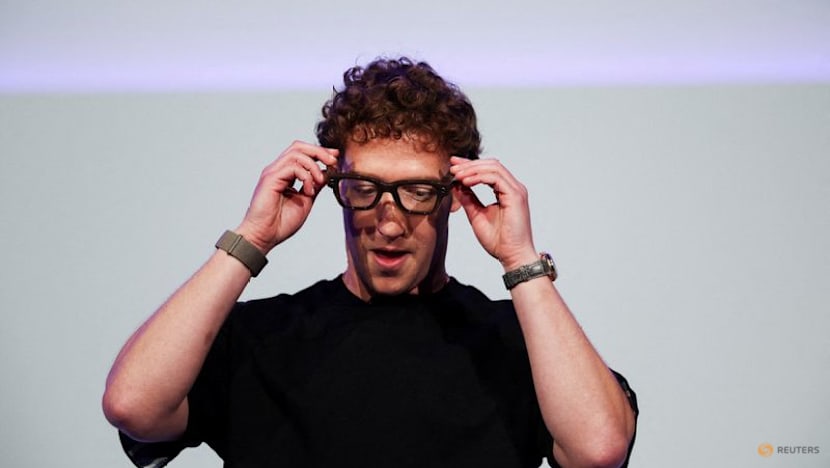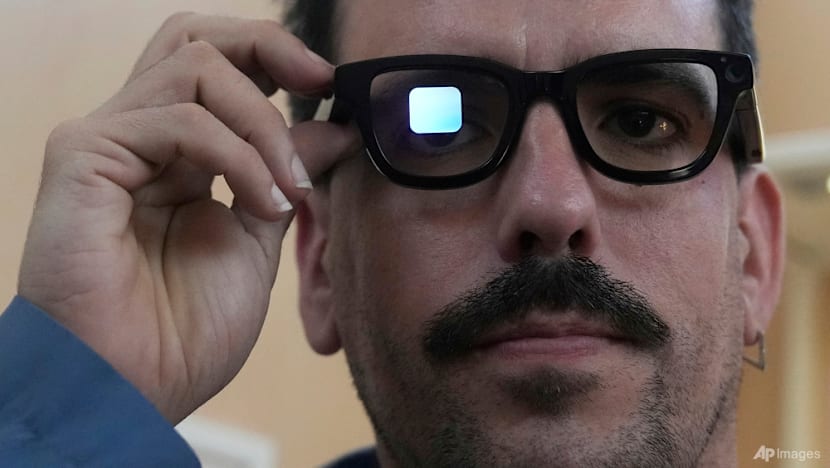Commentary: The smart glasses race has finally started
Meta’s Ray-Ban Display kicks off a coming around of product launches by tech companies Richard Waters for the Financial Times.

SAN DIEGO, California: Some technology revolutions move exceedingly slowly. It has been 13 years since Google unveiled its ill-fated Glass, a form of computing display worn as spectacles.
With the latest smart glasses Meta showed off this week, some things have changed completely. Instead of the nerdy aesthetic of Google’s much-mocked gadget, Meta’s displays are embedded in thick frames from Ray-Ban. But in other ways, the latest glasses are an eerily close echo of what the online search group attempted in 2012, and a sign that a new device category the tech industry has long dreamt of may finally be ready to enter the mainstream.
The launch of the prosaically named Meta Ray-Ban Display has also sounded the starting gun for a new tech race.
Google has a deal with another fashionable eyewear maker, Warby Parker, that is likely to lead to a line of smart glasses next year, while Snap has outlined a similar device for 2026 and Apple is reported to be closing in on a lightweight headset of its own.

A REAL MASS-MARKET PRODUCT?
After years of eye-catching but unrealistic tech demos in the field of augmented reality, an interesting new product category is taking shape. It is still a long way, though, from the sort of all-encompassing, post-smartphone computing platform that Meta – which has ploughed close to US$100 billion into virtual and augmented reality headsets – has long dreamt of creating.
Like Google Glass, the Meta Ray-Ban Display spectacles put a small, transparent display in front of the wearer’s right eye to show digital information such as text messages, turn-by-turn directions, or short videos.
The most important point about Meta’s device – apart from it being something people might actually be happy to be seen wearing for many hours a day – is that the technology has advanced enough for this to feel like it has a chance of being a real, mass-market product.
Failures in the company’s launch demonstrations suggested that packing so much technology into a very small space and getting it to work seamlessly with a new wristband controller may make the first version somewhat glitchy. But at a price of US$799, it could sell in the millions.
FULL CIRCLE IN PURSUIT OF AUGMENTED REALITY
For all the hiccups and uncertainties, the Meta Ray-Ban Display shows how the tech giants have turned full circle in their pursuit of augmented reality to get back to Google’s false start.
Microsoft’s Hololens unveiled in 2015 and the glasses from much-hyped start-up Magic Leap in 2017 were an attempt to put a full digital overlay on the real world. AR technology was nowhere near ready to support the holographic displays these companies were striving for.
Nor is it clear many people would want to wear a new kind of all-purpose face computer capable of replacing much of what they do on their other devices. The “more is more” trend in augmented reality reached its apotheosis early last year in Apple’s Vision Pro, a headset that tried to do it all but failed to catch on.
The more promising road started, instead, at the other extreme: with Snap’s Spectacles, a minimalist device that put a camera in a set of frames. That helped define a clear use case for smart glasses: taking photos or videos without needing to pull out a smartphone.
Meta, which adopted the simple camera idea with its first smart glasses four years ago, is taking things further. It had already brought artificial intelligence to the frames, in the form of a voice-activated assistant accessed through an embedded microphone and speakers.
SEARCHING FOR A PURPOSE
The search for use cases has the feel of throwing things against a wall to see what will stick.
Many of the AI features – such as live translations – could be handled as audio through earbuds and do not need to be embedded in a headset. Also, the technology needed to support the more immersive displays that Meta dreams of is some way off, and battery life is low. Meta chief executive Mark Zuckerberg promised only “an hour or two” of constant interaction with the AI.
Like earbuds and watches, smart glasses such as these also need to be connected to a smartphone, making them one more peripheral searching for a purpose in what will still be a smartphone-centric world.
Yet it has the germ of a new platform.
Initially, Meta’s heads-up display is limited to the company’s own services, with messages from WhatsApp and videos from Reels. If it sells in any volume, developers of other apps will start to hanker for a place in the real estate that the company is trying to claim in front of your eyeball.
It will take years to tell whether this could become an important computing platform in its own right, but the smart glasses race is finally on.

















